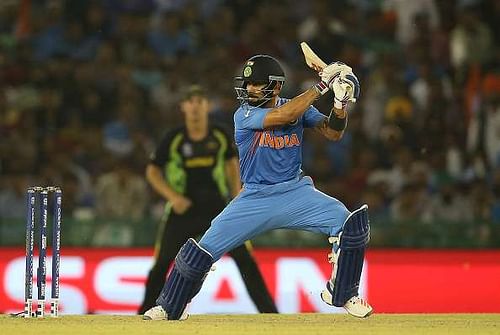
How this World T20 has tested the adaptabilty skills of cricketers

In 2007, Chris Gayle and Herschelle Gibbs had laid the foundation of what was later to be seen as the preface to an era in cricket that had the world divided.
Divided, not just in terms of the viability and the credibility of the format, but also in terms of the benefits or the losses that it caused to the sport at large.
T20 cricket has been a revelation of sorts and has enunciated both, the limits of experimentation, as well as far-reaching possibilities that come with little tweaks being introduced to the way the game has been played.
T20 Cricket: A batsman’s safe haven
With the boundaries getting shorter and shorter, the bats getting heavier and heavier, and the change in mindset that has come with the need to smack the ‘white thing’ to all possible corners, being a bowler has become equivalent to becoming a war prisoner.
Since the ICC Cricket World Cup 2015 or thereabout, we’ve seen unbelievable things take place on the cricket field. We’ve seen a hundred being raised off 31 balls, we’ve seen targets in excess of 200 being hunted down with utter disdain in 20-over competition, and we’ve seen run-rates in excess of 10 rpo become a norm.
The funny thing, however, is the fact that all the bowlers could do in this regard was wait for the batsman to be compassionate enough to make a mistake. The wickets everywhere around the world, especially for limited-overs competitions have been flat with absolutely no help for the bowlers.
A bowler bowls to take wickets and to take wickets his skills have to be backed by good captaincy, sharp fielding, but most importantly, helpful conditions from the pitch so that it assists the deliveries and not renders them as tricky as the darts thrown at the dartboard.
Challenging conditions this World T20
It is in this regard that the ICC World T20 2016 has come as a refreshing change, at least as far as the balance between the bat and the ball is concerned, as it has seen low totals being defended, but most importantly, it has seen teams adapt to the change in conditions.
Out of the 40 innings played so far in the Super 10 stage, a total in excess of 180 has been registered only 8 times. Out of those 8 innings, a 180+ total has been chased only twice. This gives one a fair idea of how tough it has been for batsmen to get the runs in the tournament.
The direct relation of such a predicament is with the surfaces that have been on offer. Going with the premise that the conditions are the same for each team, no matter how batsmen friendly or bowler friendly they are, batting in this tournament has largely depended on the batsmen’s ability to adapt.

New Zealand: The team that has adapted the best
The tournament opener between India and New Zealand is an apt example of that. On a slow, turning Nagpur wicket, the Kiwis bettered the home side in terms of adjusting to the conditions and exploiting the conditions better.
Known traditionally for their pace battery, NZ surprised everyone by picking three spinners in Nathan McCullum, Mitchell Santner, and Ish Sodhi at the behest of Trent Boult and Tim Southee- two of the best fast bowlers in world cricket at the moment.
The spin trio answered the call of the captain, Kane Williamson, and bowled with enough flight and guile to extract he turn out of the surface and trap the Indians in their own web. The Indian spin duo of Ravichandran Ashwin and Ravindra Jadeja failed to read the conditions and bowled a flatter trajectory like they had been bowling in Australia.
If that remarkable defence by New Zealand was good, their game against Australia was even better.
They had a slightly better total to defend, 142, than what they had against India, but the manner in which their bowlers came back especially after the blitzkrieg partnership between Usman Khawaja and Shane Watson, was nothing short of remarkable.
And, it wasn’t just the spinners that played a pivotal role in the victory. The surface at Dharamshala, the venue of the aforementioned game, had a loopy kind of bounce, and the ball was holding off the surface making in incredibly difficult for the batsmen to time it.
The NZ pacers read that beautifully and continued bowling back-of-a-length deliveries or short balls, and almost all the Australian batsmen perished trying to clear the fence, despite knowing very well that it was extremely difficult to hit the ball in the air on the slow surface.
If New Zealand displayed exemplary skills when it came to bowling, the other two semi-finalists, India and England displayed tremendous batting skills under pressure.